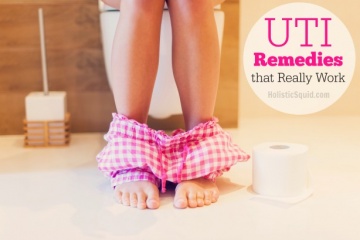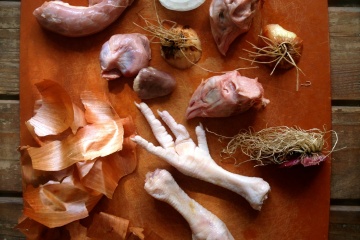

Got diastasis recti? You know, abs that just can't seem to pull it together. After pregnancy, a round and protruding belly is common and you might even think it's natural. But what if that flabby, post-baby tummy is a sign that something is out of alignment? And what if diastasis recti treatment could reverse your postpartum belly?
Quickie 101 on diastasis recti
Diastasis recti describes the unnatural split of the abdominal muscles that’s 2.7 cm or greater.
When the connective tissue separating the left and right sides of the abdominal muscles is stretched beyond what it can handle, this connective tissue (called the linea alba) weakens and the muscles separate. This strip of connective tissue running down your midline, between the left and right sides of your abdominal muscles also connects to your pelvis and your ribcage.
Certain things will strain your linea alba. Like a growing baby. Or excess fat wrapped around your abdominal organs. Or even too much exercise. A linea alba under constant strain is a thin and weak linea alba. This translates into loose, sagging abdominal muscles – or belly flab.
Quit the crunches (for now)
While it's possible to have a flat tummy and diastasis recti, many mothers target their round postpartum belly with exercises that engage the abdominal muscles. Because muscle tone and strength equals tighter abs, right?
Not so fast.
Placing more strain on the connective tissue that holds your ab muscles together is the last thing you want to do. Remember, this connective tissue – the linea alba – is weak. So, get rid of exercises that pull or push on the linea alba.
In order to support the repair of connective tissue, it's important to focus on the structures around your abdominal muscles. In other words, are they carrying their weight? Rather than isolate your core muscles, look for a dynamic diastasis recti treatment. Focus on whole-body alignment, balance, and strength.
Exercises that isolate the abs (and that you should quit for now) include:
- Full prone planks
- Crunches
- Situps
- Oblique twists
- Extensions
Draw your belly back and drop your ribs
When beginning your diastasis recti treatment, Wendy Powell – postpartum exercise expert and founder of the MuTu System – recommends finding and connecting with your deep core muscles. What does this look like?
Without raising or tensing your chest or shoulders, GENTLY draw your belly button back towards your spine as you slowly exhale. That’s the right muscle! You’re not ‘sucking in’ or making any forceful or exaggerated movement. Your pelvis shouldn’t tuck under as you do this – in fact nothing should be happening in your shoulders, chest or pelvis! – it is just a subtle drawing in at the lower abs.
Likewise Katy Bowman, founder of Nutritious Movement and author of Diastasis Recti, suggests that you drop your ribs. She even has a whole chapter devoted to this suggestion. Katy explains that where your ribcage goes, your linea alba goes. So, doing your best to have good posture with “chest up and shoulders back” does little to support the linea alba. It actually places more strain on your connective tissue as your ribcage moves away from your pelvis and abdominal muscles expand.
The solution: Drop your ribs.
Dropping your ribs means that you pull the ribs down, back, and together. One way to do this is by activating your intercostals – the group of muscles found between each rib. Katy recommends this simple exercise:
- Firmly tie a resistance band or a pair of tights around your torso, just beneath your breasts (where your bra strap would sit).
- Drop your ribs.
- Inhale and expand your ribcage into the band until you feel resistance.
- Exhale and notice how your ribcage pulls away from the band and closer to your spine, or the center of your body.
Reconnect with everyday movements
Besides connecting with your deep core muscles, get in the habit of incorporating simple, whole-body movements into your every day life. Personal trainer and women's fitness specialist Nicole Crawford recommends daily natural movements and restorative poses, like:
- Hanging and swinging
- Climbing
- Walking
- Squatting
- Legs up wall
- Psoas release
- Child’s pose
Natural movements and restorative poses work together to gently engage your core muscles without isolating them. This means less wear and tear on your linea alba – and more overall support.
When it comes to specific movements like hanging, we have to seek them out. This might mean hanging from a tree branch in your back yard. Or swinging from the monkey bars while playing with our kids at the park. Park gyms – like the monkey bars – allow your to lift your arms above your head and activate a whole set of muscles that most likely never get touched. Without directly isolating your abs, you're strengthening them.
Katy Bowman explains,
Your core muscles connect to your lower body and your upper, so a lifetime of barely using your ams will always leave a large portion of your abdominal strength under-utilized.
Can you fix diastasis recti?
If you've had diastasis recti for five months or even five years, you can fix it. You just need to do the right exercises.
Wendy Powell, who developed the Mutu System, is all about empowering women to strengthen their cores safely. And while she helps you get rid of your mummy tummy, she's also about self love and overall alignment.
My friend Leslie did the program and she told me that within two months of the Mutu Focus program, she transformed her tummy. What's more, the exercises are easy and only take about 15 minutes a day to do.
Food matters too
While exercise matters, certain foods give the body exactly what it needs to repair connective tissue. When diving into a diastasis recti treatment that works, one of the best foods to include is bone broth.
When making bone broth at home, you can use beef bones or chicken bones. If possible, try to always have bone broth on hand and look for ways to incorporate it into your everyday meals. This can mean soups or stews. You can cook white rice with it or use it to braise veggies.
If bone broth isn't an option or if you're looking for a convenient supplement, I recommend this brand of collagen.
Collagen can help repair connective tissue and even reduce joint pain. If you have ongoing pain and inflammation, you may be surprised to find that supplementing with collagen makes whole-body alignment a little easier.
Ready to heal your diastasis recti? Click here to get Mutu.












THANK YOU for posting about these things! I believe I have all of this…the pelvic floor problems, back pain etc…Our youngest is now 3 I need to fix this NOW!!! Thanks again for all you do!
I have the Katy Bowman book! Highly recommend it!